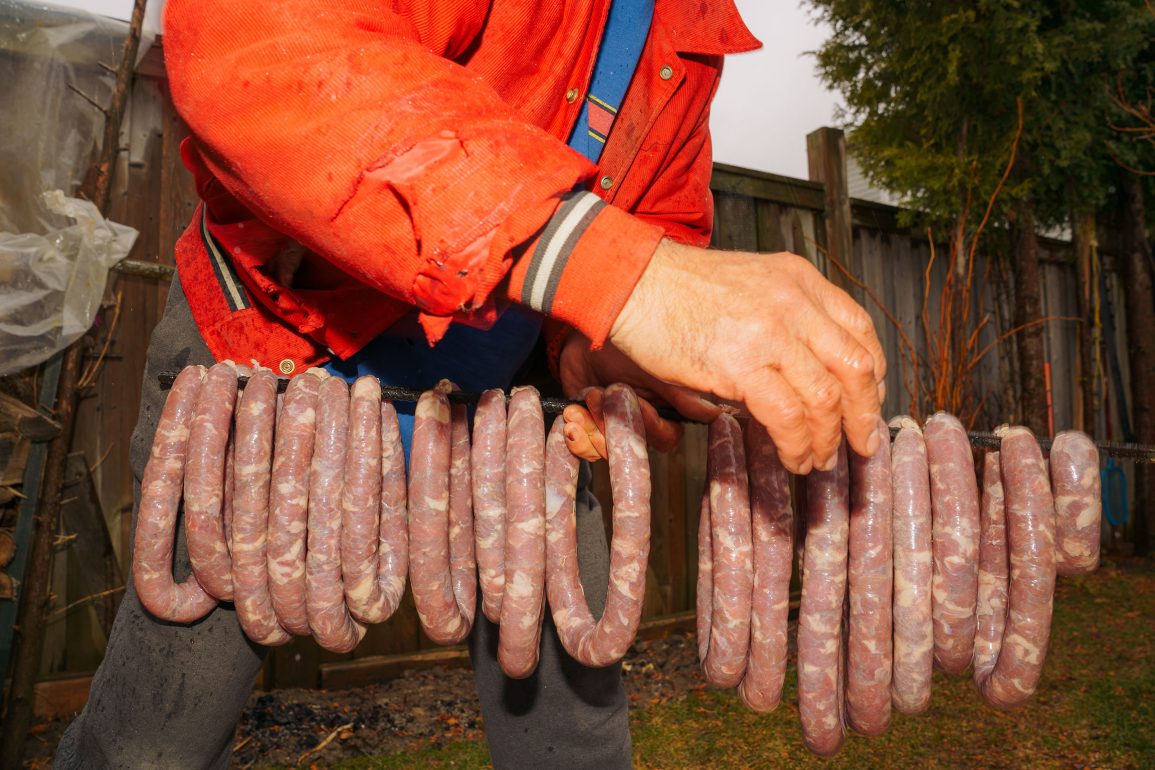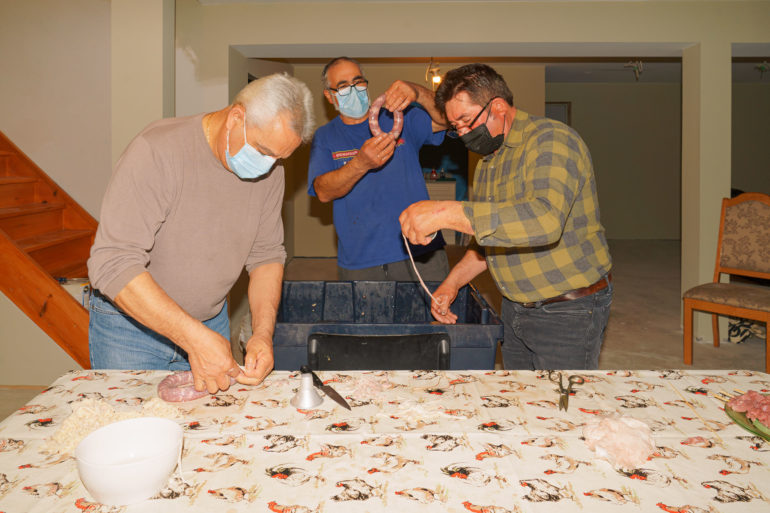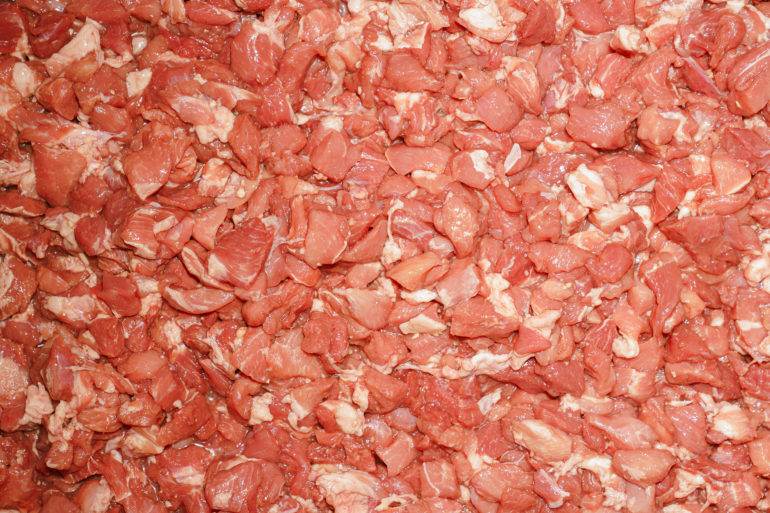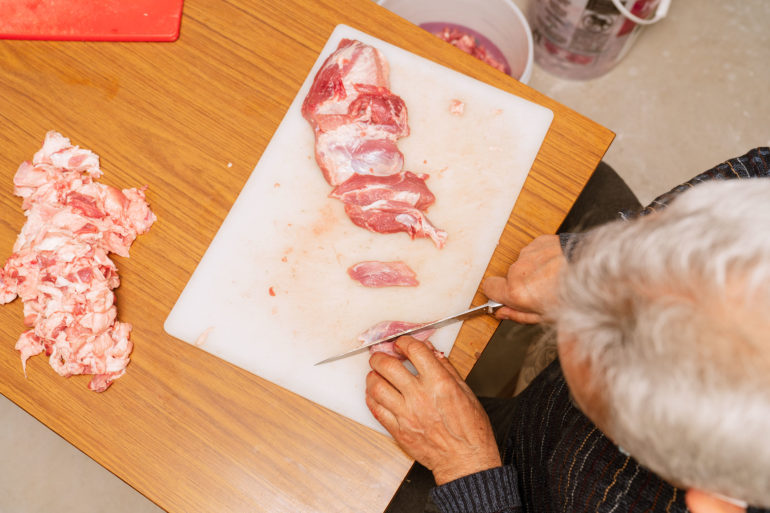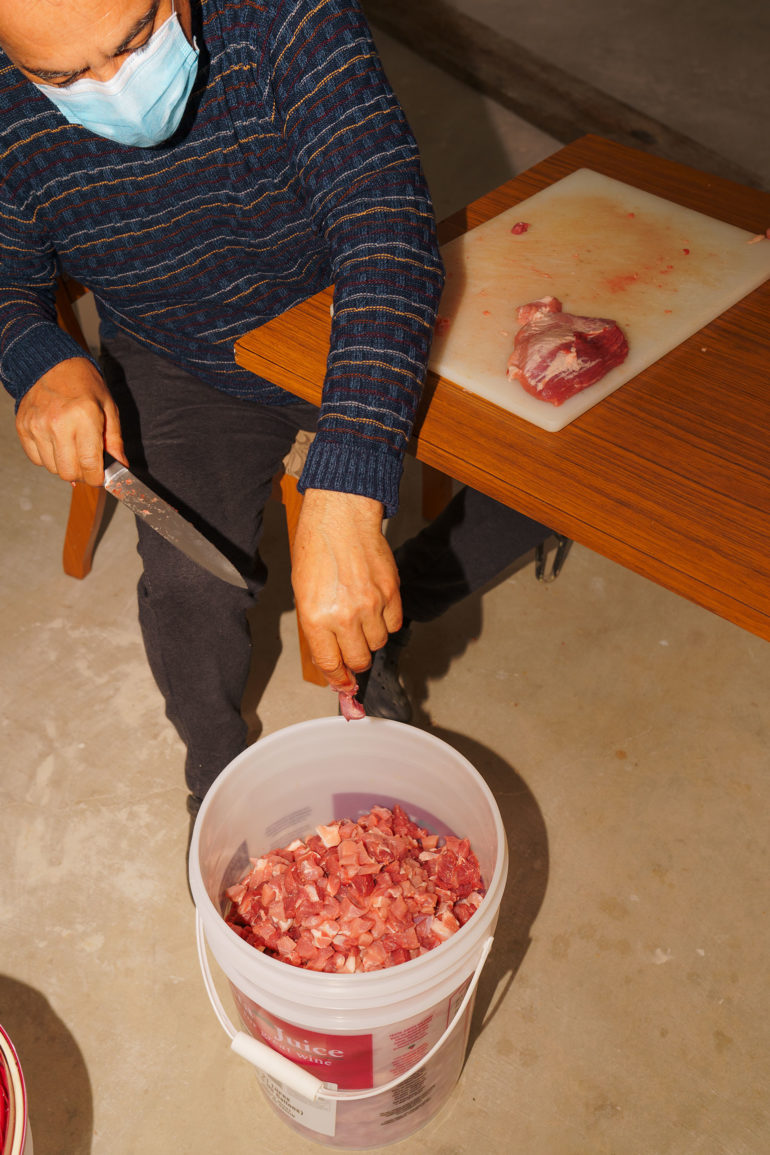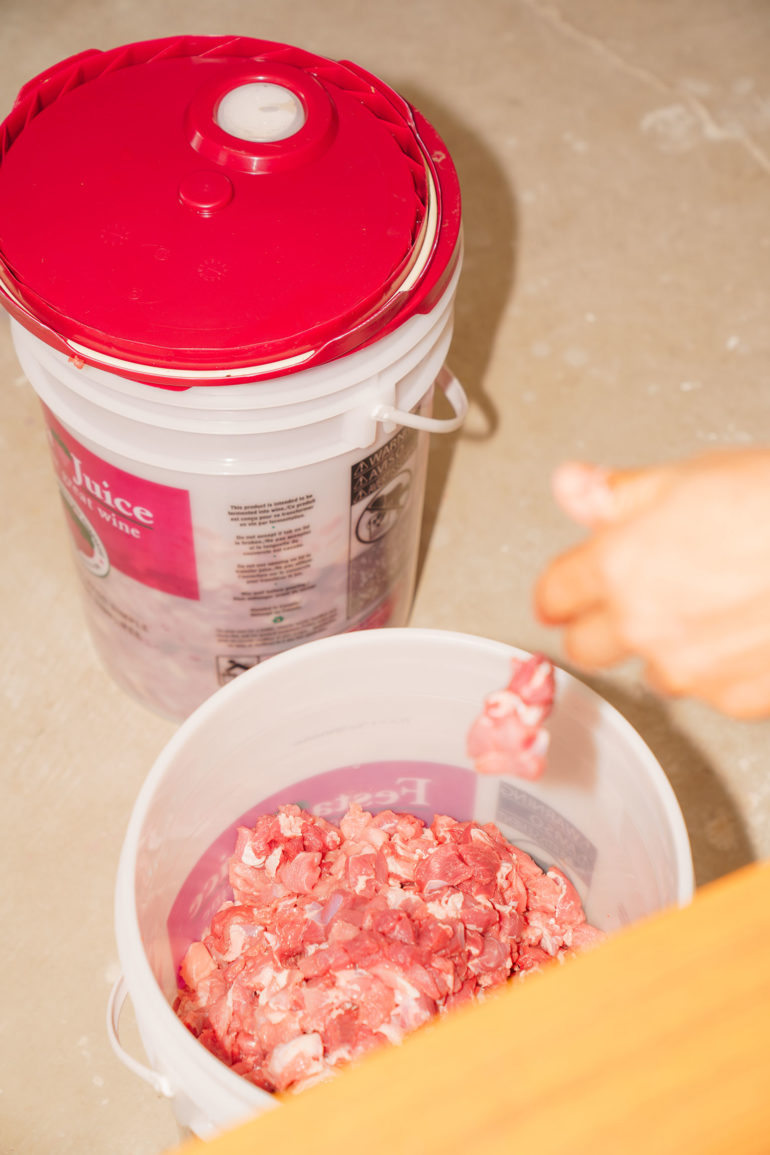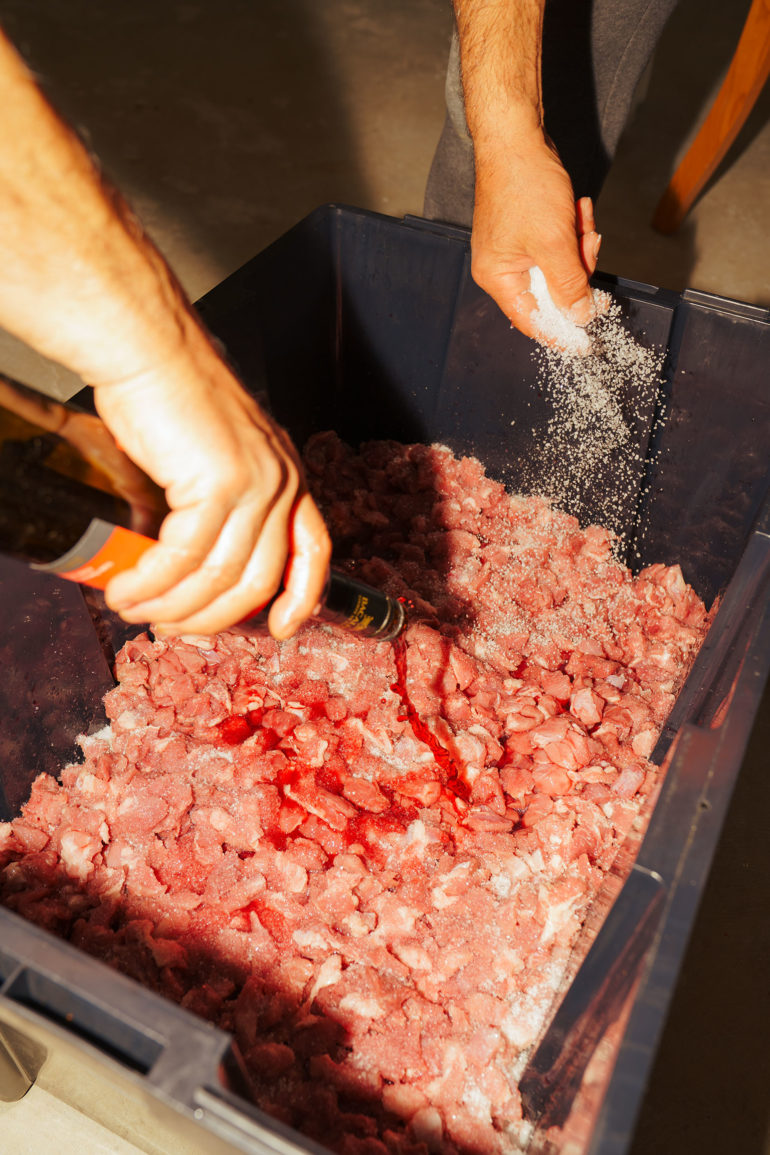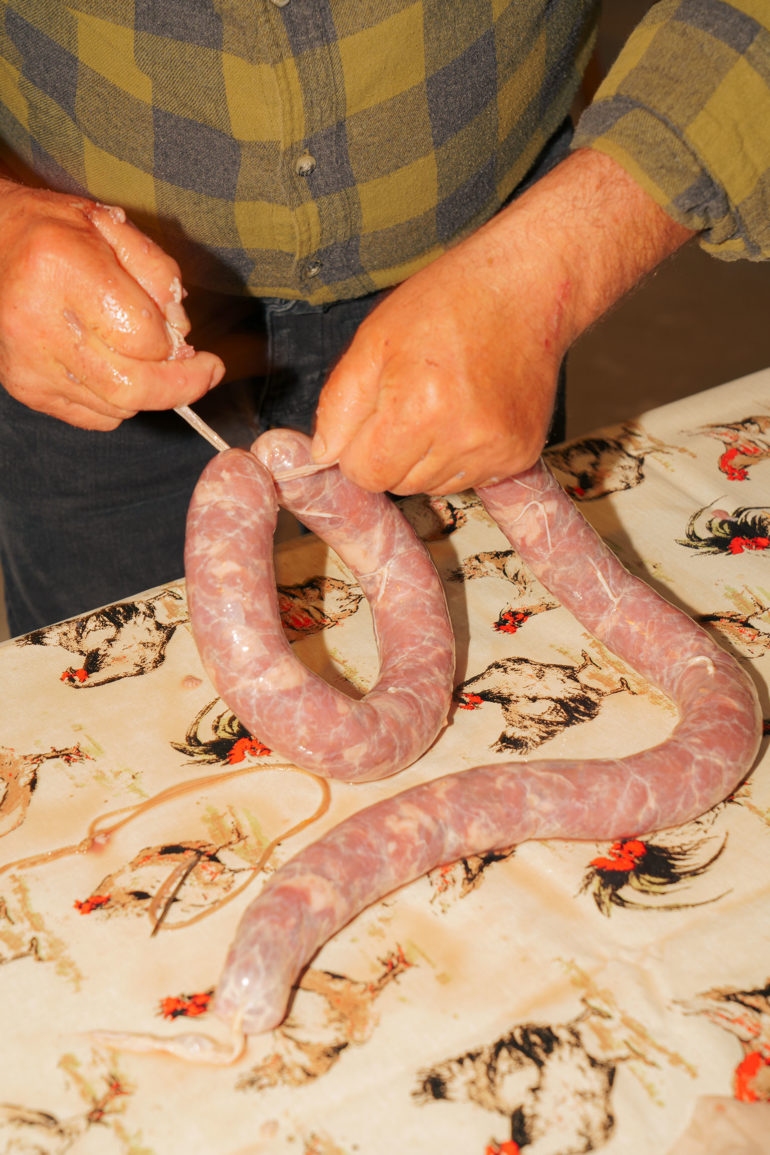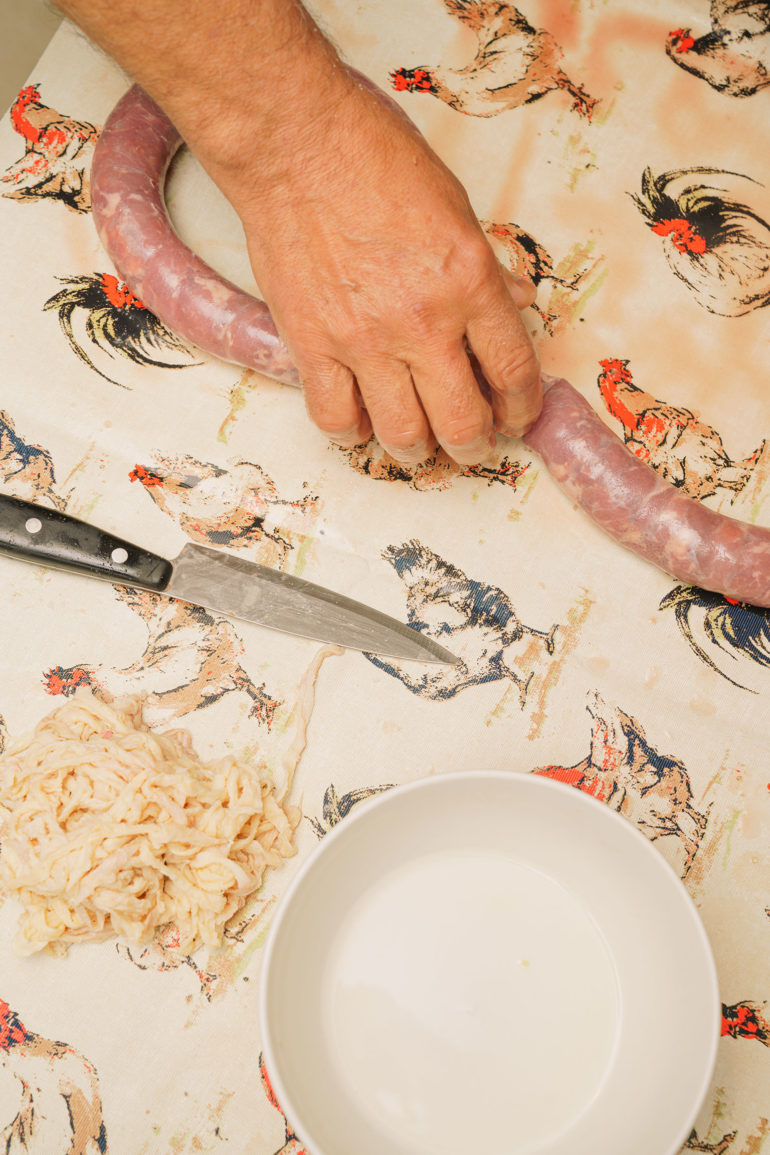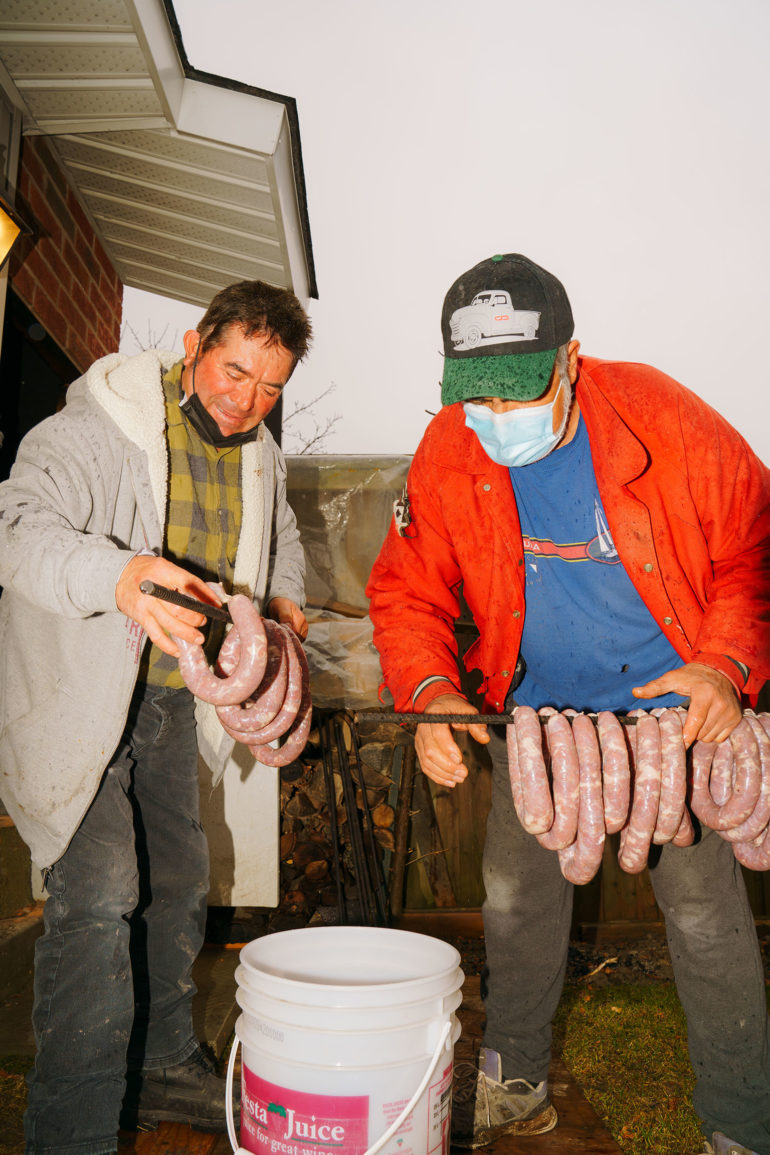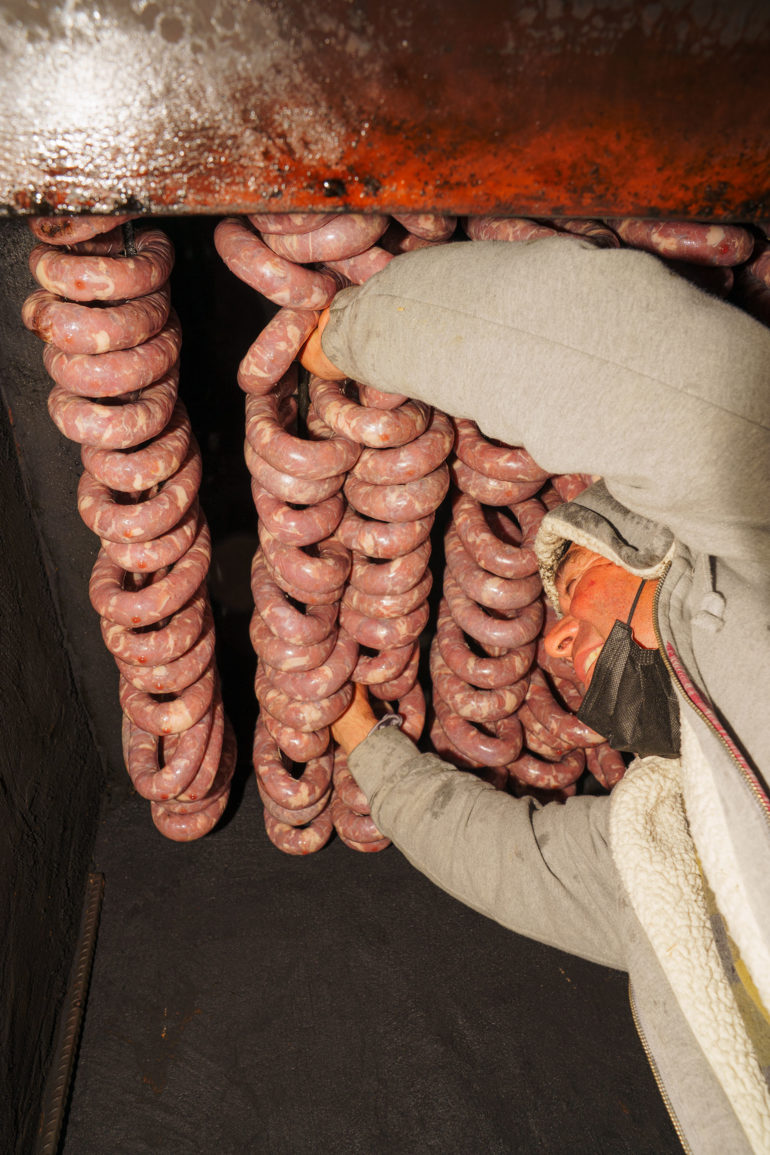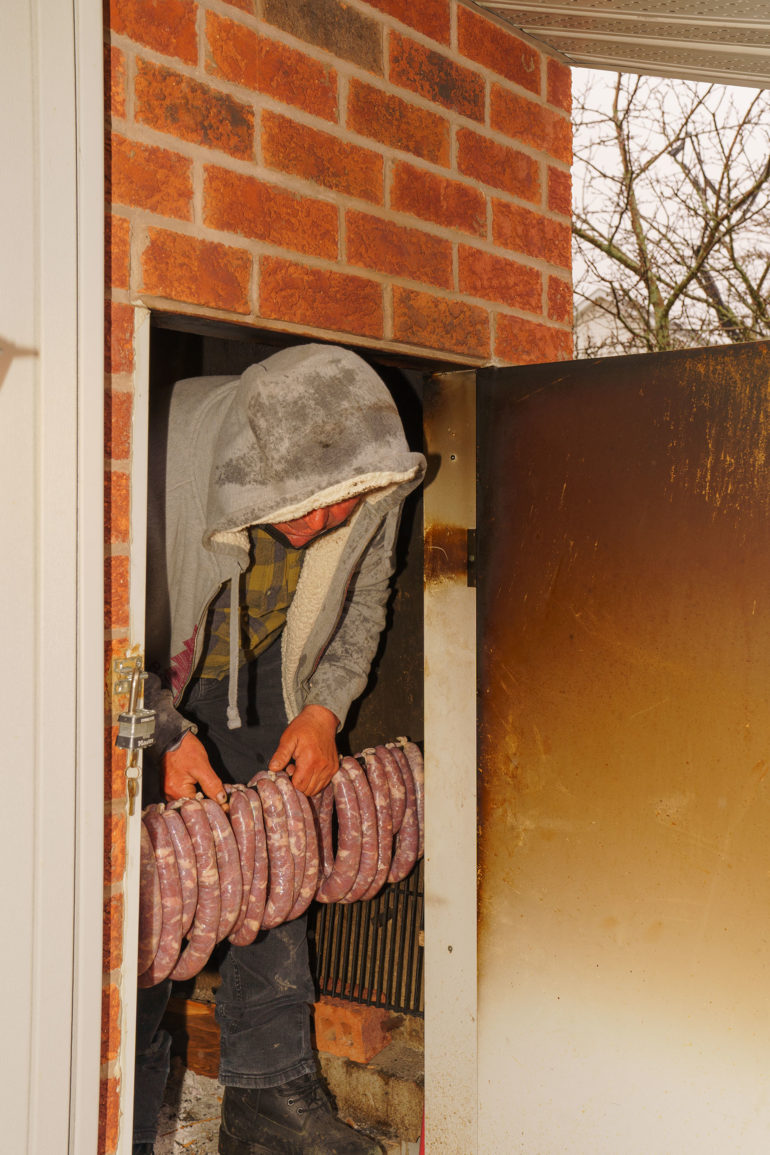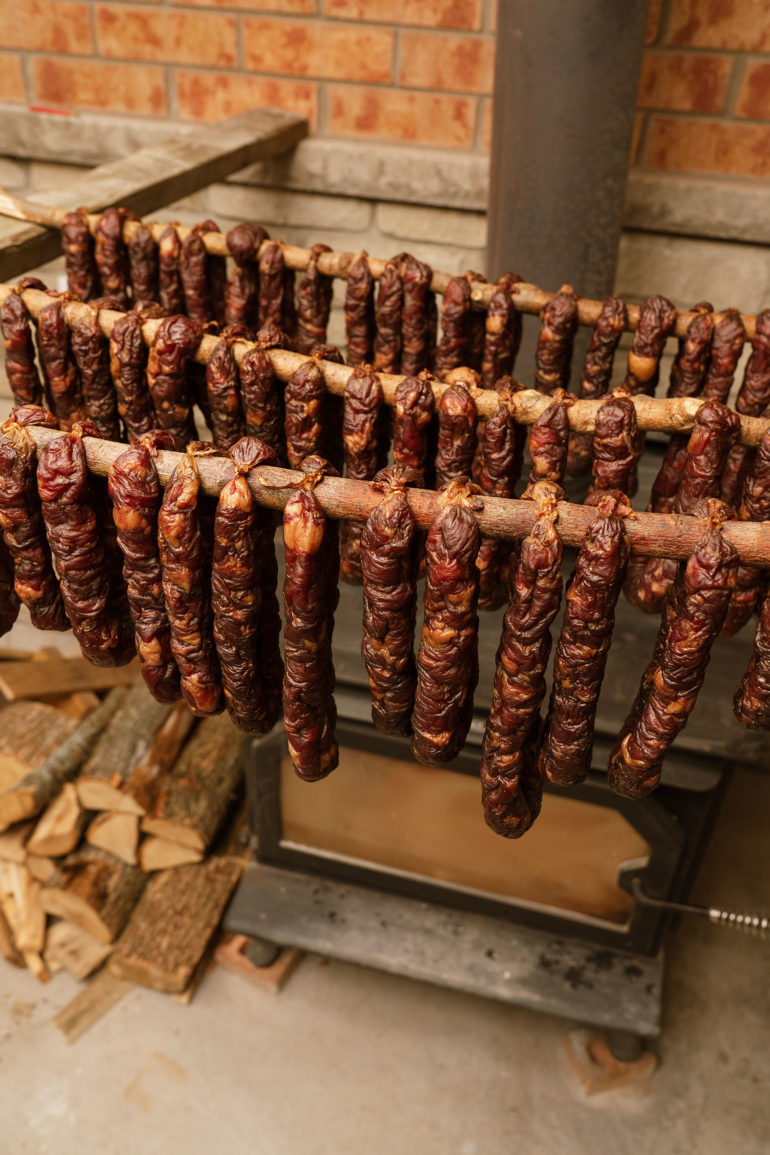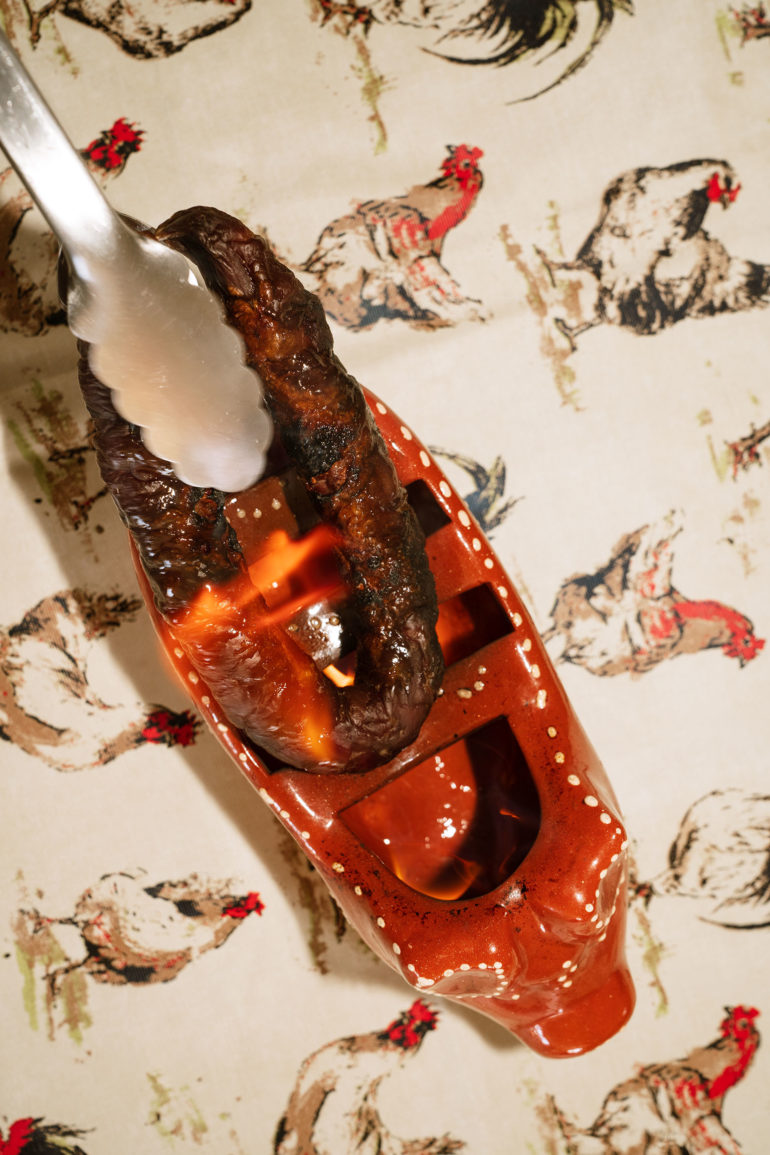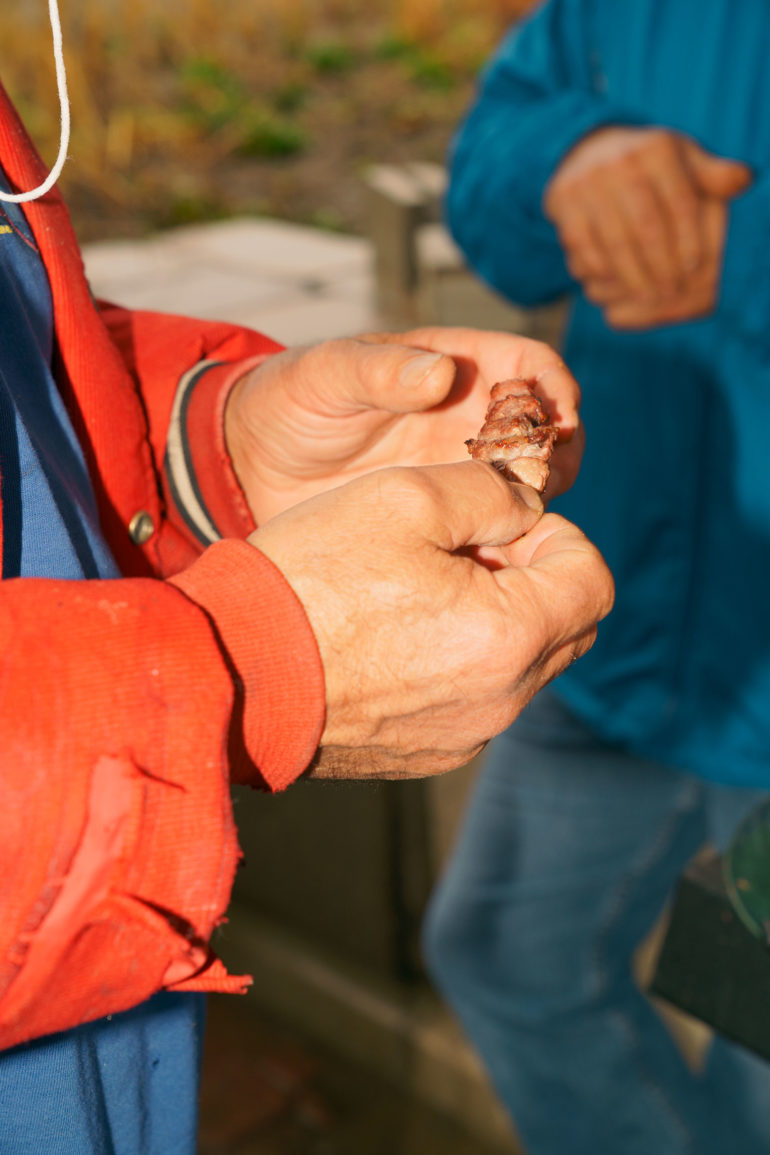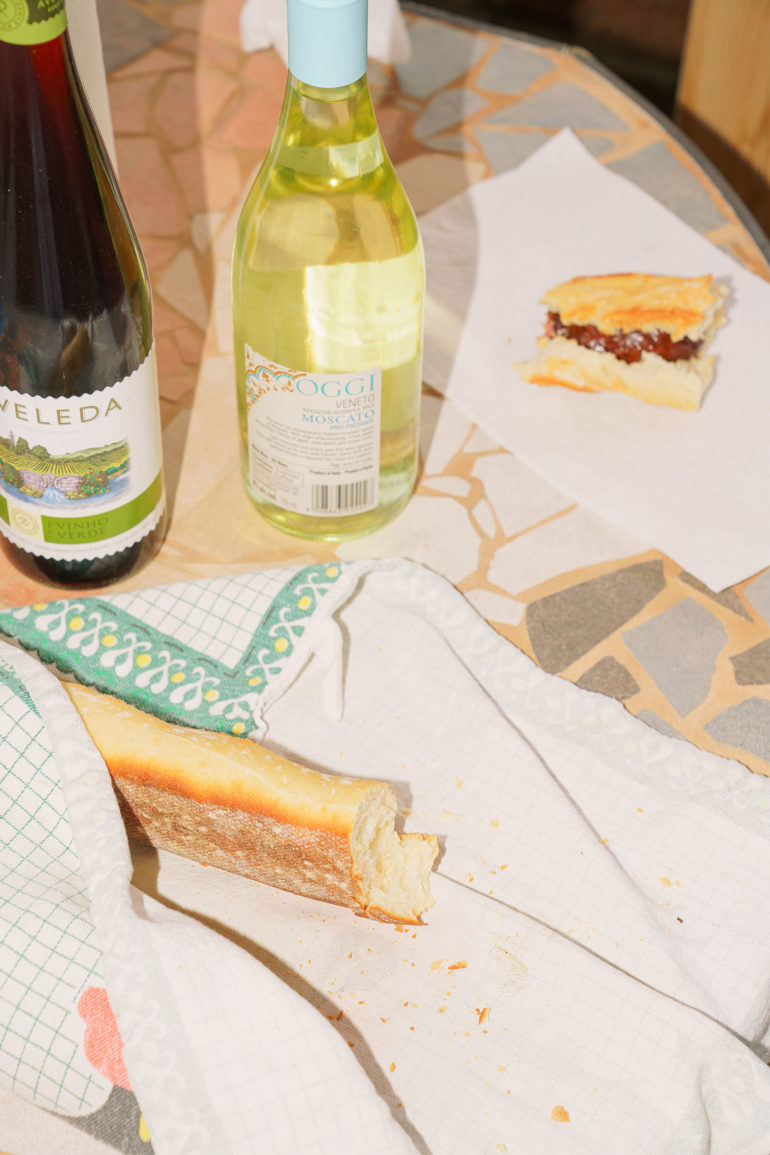If we’ve learned anything in the past eight editions of Luso Life, it’s that Portuguese culture revolves around food and community, and when it comes to melding the two, nothing quite compares to the camaraderie felt when making chouriço. In rural Portugal, it was common for families to join forces every winter to butcher the pig and make chouriço, preserving the meat so it could be eaten year-round.
As a child, I remember visiting Portugal and staying with my grandmother, Brizida, whom the grandchildren called “mãe” (mom)… to this day. I’m not sure if we did that because we were so smart that we saw her as the matriarch of the family, or we were simply parrots mimicking our parents and too young to realize “avó” was the correct word for grandmother. Mãe Brizida lived in a tiny three-room stone house—her bedroom, a front room decorated with dozens of photos of her family and a kitchen with a stone, wood-burning oven as the focal point. By the time I started hanging around, she had purchased a small gas stove for day-to-day cooking, but the oven was still used to bake broa (corn bread) and to smoke chouriço. Decades of smoke lived in those walls giving her home a distinct aroma that to this day brings me back in time whenever I smell homemade chouriço. That’s when the saudade kicked in; that desire to travel to Portugal or at the very least taste one of the stowaway chouriços that Mãe Brizida would sneak into our luggage when our vacation ended.
In North America, chouriço has a bit of a culinary identity crisis. Many people think it’s Spanish… and the confusion is natural, both countries have a pork sausage with similar names but the spices and curing process is different so let’s be clear chorizo (cold cured and heavily spiced with paprika) is from Spain while chouriço (smoked and loaded with garlic) is from Portugal.
In a Portuguese home, chouriço sneaks it’s way into many of our meals. It replaces bacon next to our eggs for breakfast, at lunch a few slices are dropped into our caldo verde (the famous green soup), at dinner it makes it’s way into our cozido à Portuguesa (Portuguese boiled dinner) or a savoury arroz de pato (duck rice) and when you have a few guests over, nothing is more impressive than pulling out your assador de barro (a clay cooking vessel), adding some Aguardente (Portuguese distilled alcohol—essentially moonshine) and setting it aflame at the table to grill chouriço à bombeiro.
When we decided to feature the chouriço as our Mesa da Avó feature, I turned to three friends who have been making the beloved sausage together for many years—os avôs Armando Brito, Avelino DeSousa and Herminio Ganhão. Using a simple recipe they brought with them from Portugal, the team enjoys the yearly ritual of buying meat, butchering it themselves, seasoning and finally smoking them in a custom built smokehouse.
When I ask why anyone would go through so much trouble to make sausages that are readily available at many grocery stores, the answer is simple—they want to ensure it’s done their way. When I saw these guys at work however, I realized there was more to it; the social aspect. With the world in varying states of lockdown, os avôs had each made their chouriço separately but when approached to make a batch for Luso Life, they were more than happy to roll up their sleeves, mask up and get to work. It was an excuse for three friends to get together and share some quality time. From beginning to end, the three took turns telling stories and jokes while laughing hysterically at tales I can only assume they’d heard a hundred times. Once the work was done, os avôs moved outside to the barbecue, where they ended the afternoon by taste testing homemade wine and chouriço each had brought from their private collections.
Ultimately, it was this sense of community that led us to take our photoshoot one step further and donate this delicious batch of chouriço. With the team secured, we went to work getting meat and casings donated from John’s Butcher Shop in Toronto. The next step was finding someone who could find good homes for the chouriço… enter Toronto social worker, José Dias. Since August of 2020 Dias and a small group of volunteers have been running a program called Meal Bank out of Casa do Alentejo Community Centre, cooking and delivering hot food to neighbourhood families that have been affected financially by the pandemic… And with this, the circle was complete. From its humble beginnings in homes all over Portugal where communities would help each other make chouriço for the year, to three friends meeting up for some laughs and donating their time to help feed members of their community in Canada.
.
Chouriço Minhoto
MAKES 40-50 CHOURIÇOS
INGREDIENTS
12 kgs of pork butt/shoulder
1.5 liters red wine (white works as well)
200 g of coarse salt
1 cups of garlic cloves halved
hog casings (ask butcher for the right amount based on the pounds of meat you’re using)
EQUIPMENT
large, deep basins (for marinating and holding the finished sausages)
a roll or two of twine
sausage stuffing funnels
- needle and colourful thread
PREPARING THE MEAT
Cut the meat into small cubes between 1/4” and 1/2” and drop into the basin.
Add wine, salt and garlic between the meat dividing evenly between the basins.
Mix everything together until the salt dissolves. Ensure meat is evenly seasoned.
Cover and place in refrigerator or cold cellar (if you have one).
Let it sit for 3 days, mixing every 12 hours (morning and night). It’s important that the meat remain somewhat wet, so if necessary add a bit more wine.
Once a day, take out a few pieces of meat and fry them in olive oil to check the salt. It should be savoury but not too salty. Add more salt if needed, or if it’s too salty, add some more wine.
PREPARING THE CASINGS
Soak the casings in three or four changes of cool water and lemon to remove the packing salt, then rinse the inside with warm water (you can let the water run through the casing).
Cut casings into 50 cm (20 inch) lengths.
STUFFING
Cut twine into equal lengths.1
Remove all the garlic cloves from the meat.
Tightly fasten the string to one end of the casing.
Insert the other end of the casing into the sausage stuffing funnel and hold with one hand. Use your other hand to stuff the casing with the pork mixture.
Use a needle to poke the casings to remove any air pockets.2
Use the twine to tie the two ends of the casing together, closing the open end in the process. (Use those fancy knot tying skills you learned in Boy/Girl Scouts)
Tie a knot at the top of the string for hanging.
SMOKING
This can be a challenge. You will need a spot where you can light a medium fire that will create lots of smoke underneath the sausages. We were more fortunate since Armando has a brick smokehouse he built.
Place the chouriços onto a stick and hang the sticks in the smoker, high enough above the fire so that the flames don’t reach the sausages. You don’t want them to cook—low heat, lot’s of smoke.
Smoke for 24-48 hours.
Bring sausages indoors and hang to let them dry for three days.
STORAGE
Short-term: store sausages in a cool dry spot.
Long-term: vacuum-seal and freeze.
1 traditional tip 1: wrap the twine around the circumference of a plate over and over, then cut.
2 traditional tip 2: add a long colourful thread to the needle so you don’t lose it in the meat.
WORDS: DAVID GANHÃO
RECIPE: ARMANDO BRITO, AVELINO DESOUSA & HERMINIO GANHÃO
PHOTOS: NOAH GANHÃO
